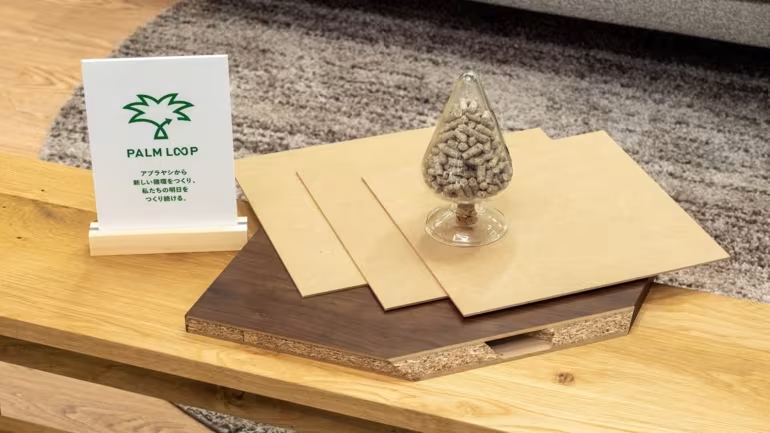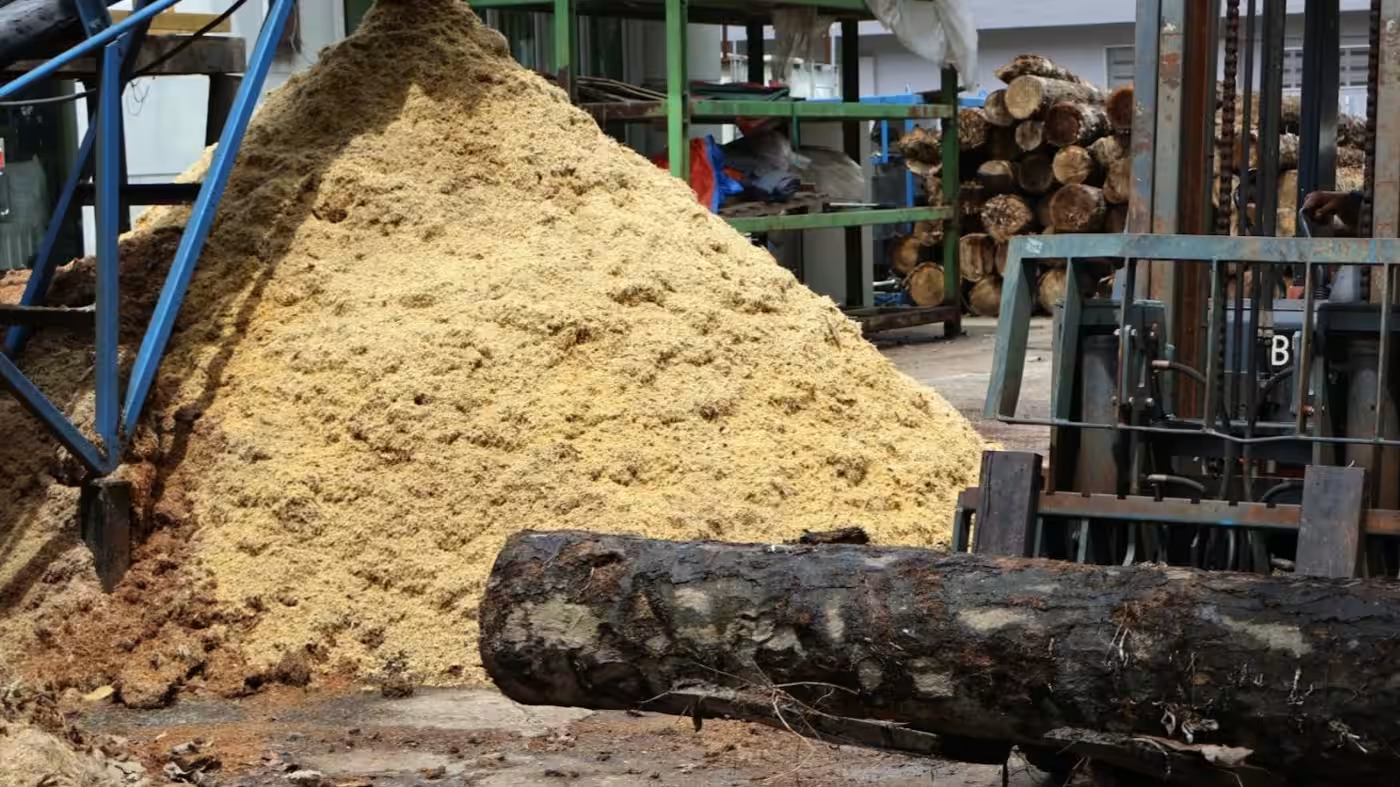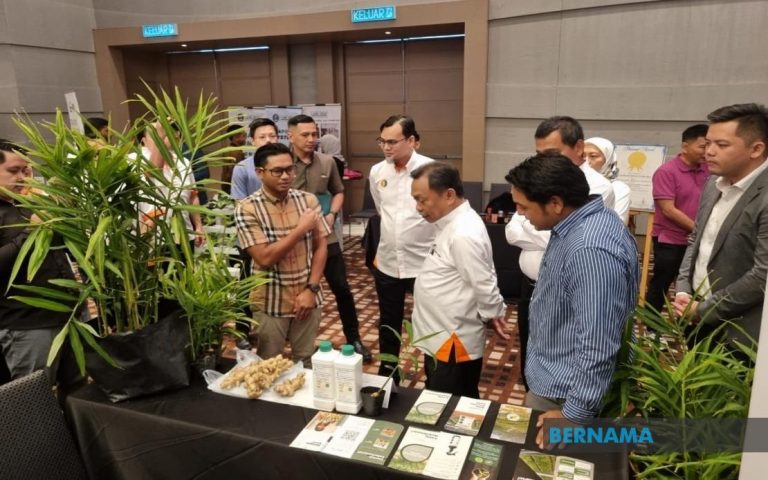Palm oil industry looks to lessen carbon footprint tied to decaying trunks
BY FUMIKA SATO, Nikkei staff writer
May 2, 2024 04:58 JST
KUALA LUMPUR — Japanese and Malaysian researchers are testing a process to turn felled palm trees into biomass that serves as a renewable source of energy.
The trunks of felled palm trees are arranged in stacks at a demonstration plant in Kluang, a town in southern Malaysia. The trunks, when fed into a machine, are reduced to heaps of moist, amber fiber within seconds.
The palm trees are easy to mulch because their elevated water content softens the wood. The fibers are later washed, dried and converted into small, cylindrical fuel pellets.
The plant also makes use of the liquid wrung out of fibers after they are washed. The liquid contains sap that is recycled into pellets.
Palm trees are 70% to 80% water, meaning they yield large quantities of sap. Because palm sap has sugar content, it can be recycled into fertilizer or sustainable aviation fuel, the plant’s representatives say.
The palm tree biomass project was selected in 2018 for a sustainable development research program backed by the Japan Science and Technology Agency and the Japan International Cooperation Agency.
The project is led by Akihiko Kosugi of the Japan International Research Center for Agricultural Sciences (JIRCAS). Japanese universities and businesses, such as engineering firm IHI, are participating along with Malaysia’s government and the Universiti Sains Malaysia, a major research university.
Palm oil, used in various food products and daily necessities, is the world’s most heavily consumed vegetable-derived oil. Indonesia and Malaysia produce about 80% of the global volume.
But the expansion of palm groves has been blamed for the destruction of forests. Turning palm oil production into an environmentally sustainable industry has become a pressing issue.

A palm tree decreases its yield after 25 years or so, necessitating replanting. When old palm trees are felled, they are usually left to decompose under the belief that they would fertilize the soil.
But research shows that felled palm trees become breeding grounds for termites, as well as other insects and fungi, Kosugi said.
“We now know they produce methane and other greenhouse gases,” the researcher said.
Tens of millions of palm trees are felled and abandoned each year in Malaysia. Each tonne of palm tree trunk that is cut down produces 1.3 tonnes of greenhouse gases, Kosugi said.
Recycling old palm trees would reduce greenhouse gas emissions.
Palm waste is being looked at as a source of biomass for producing energy. But impurities in palm waste can damage boilers or cause fires.
“It’s critical to remove impurities,” said Sudesh Kumar, biotechnology professor at the Universiti Sains Malaysia.
The Kluang plant removes the impurities, pulverizes long fibers into powder and compresses the dust into homogenous pellets.
Palm waste also can be recycled into material for making furniture. Panasonic Holdings subsidiary Panasonic Housing Solutions has developed a production process for making wooden boards out of dead palm trunks.
Production is still in the testing phase, but Panasonic Housing Solutions is providing 15 furniture makers with the boards. Beds and other furniture made from palm trunks have been sold in Japan since 2022.

“We’re considering using [recycled palm trees] as construction material in the future,” a Panasonic Housing Solutions representative said.
For the Kluang plant project, the question remains whether recycling old palm trees into fuel will become profitable.
To reduce the expense of delivering palm trunks to recycling plants, one idea is to approach businesses that run both palm groves and oil extraction facilities with a deal to dispose of waste in exchange for no-cost supplies of felled palm trees.
This arrangement might work in Sarawak, a Malaysian state that has many integrated palm groves and processing plants. Nissin Shoji, a Japanese corporate partner on the project, plans to build a recycling plant in Sarawak.
Palm tree trunks are “an attractive commodity in terms of securing fuel and reducing greenhouse gases,” a Nissin Shoji representative said.
The Kluang project is due to end next year, though JIRCAS formed a new company in 2022 to continue the operation. Kosugi serves as the president.
Source: NIKKEI ASIA






